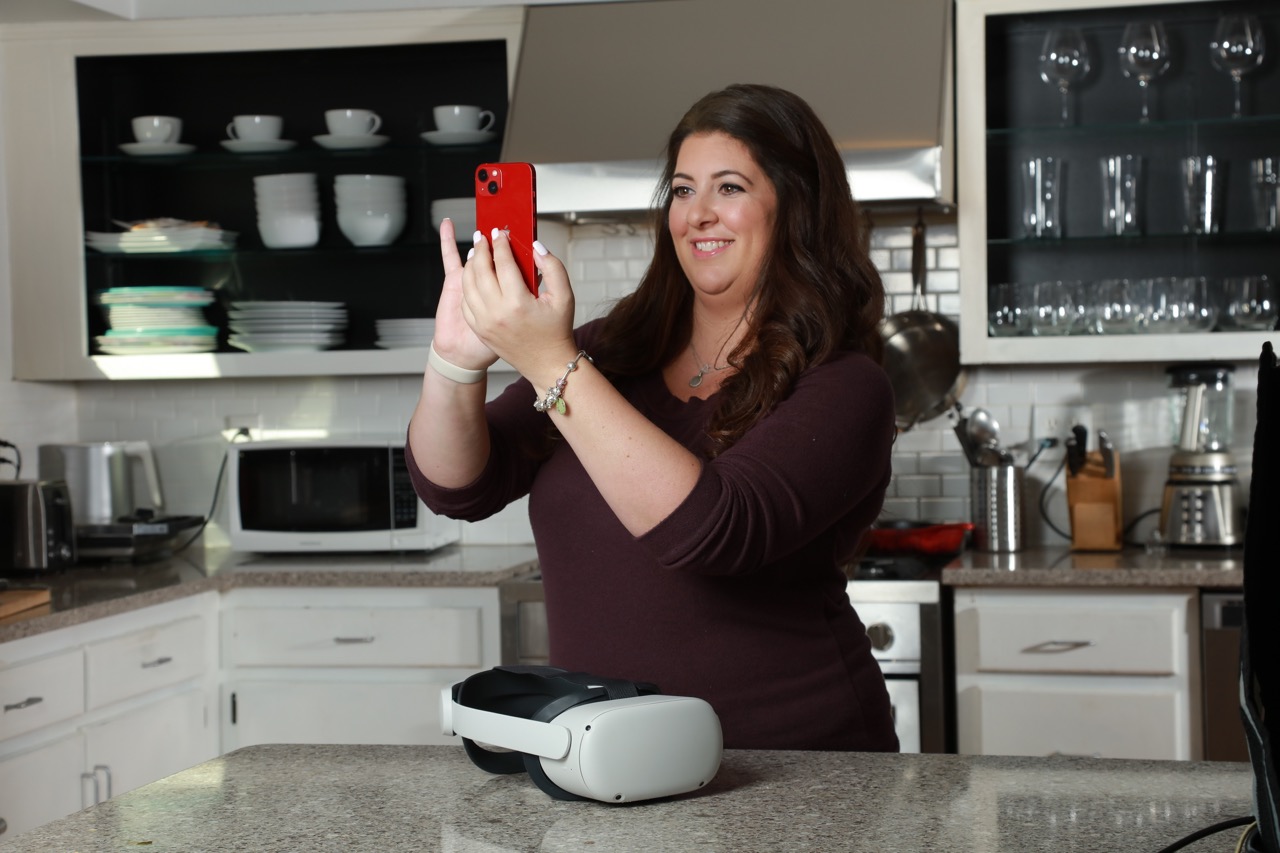With Kokomo VR meeting software, Canon takes a step away from its hardware roots
Canon has a long and deep history of being a hardware manufacturer. Most consumers know it best as a camera manufacturer, but the company has a long, deep and illustrious history in medical, office equipment, and other imaging applications.
During the pandemic, a lot of its business shifted. People stopped going to offices. Sporting events were shut down. And while the medical industry was booming, Canon as a company needed to rethink its mission and vision: What does an imaging company do in a world where people have a desire to connect, but are unable to leave their homes while a deadly virus rages around the world?
At CES 2023, the company showed off its vision for the future — a vision that seems a lot less hardware-y than you would expect from the 85-year-old company that has traditionally made all of its money from making things with buttons.
A rag-tag bunch of Canon veterans took on the challenge and created Kokomo, a VR meeting software package that, in essence, makes real-time 3D video calling a reality.
Users don a VR headset and point a smartphone at themselves. The software scans your face, and creates a photo-real 3D avatar of you and the person you are calling. It uses the motion sensors in the headset and the camera to capture your avatar, moving you into a photo-realistic space, and boom, you are virtually present with a colleague, family member or friend. The technology to scan your face is similar to the tech used by iOS’s face ID, doing a brief pre-capture process. From there, your face’s shape and texture can be shown off inside the video calls.

A quick scan with the Kokomo companion app captures your face so it can be shown to your friends in VR. Image Credit: Canon
The most interesting thing to note about the above paragraph is the lack of Canon products. Traditionally, Canon’s software solutions have focused on enhancing and facilitating the use of its hardware products. The company makes neither smartphones nor VR headsets, however, so this move represents a major departure from its roots.
TechCrunch sat down with the team that led the development of Kokomo to figure out how it came about, and where Canon is going as it re-imagines its own future.
Kokomo is a way to enable people to be there, when they couldn’t. Jon Lorentz
“This is representing a very exciting new innovation for Canon – but also a very new business direction for Canon, as well,” said Jon Lorentz, one of the co-creators of the Kokomo solution. “As you know, traditionally, Canon is very much tied to our hardware products. When we announced AMLOS at CES last year, it was about innovating work from home. Our task [with Kokomo] is to innovate life at home, and that is where this project came from. When we started, we were in the thick of COVID, and there were not a lot of ways for people to get connected. The underlying premise for what we created was to be a solution to that. Kokomo is a way to enable people to be there when they couldn’t.”
The team’s goal was to create a solution that takes the experience beyond a phone call, a FaceTime call or a Zoom call – to feel present rather than to just look at each other on a screen. A worthy pursuit in a world where travel is limited and screen fatigue is real. But how is Canon’s solution for bringing people into a virtual world going to accomplish that?
“We support most of the popular consumer VR headsets in the market to enable people to engage in immersive calls, as we are calling them. In these calls, people can engage. They are dynamic, in living, breathing environments. You can download a companion app on a mobile phone, which lets the person you talk to see you from head to toe,” explains Lorentz. “No more legless avatars. No more wondering what someone is actually gesturing. And you can actually see the other person. You can be in the call, rather than on the call.”
Below is an in-depth interview with Kokomo co-creators Jon Lorentz, Ray Konno and Jason Williams. The interview has been edited for clarity and length.

A phone and a VR headset are all you need to use Canon’s Kokomo. Image Credit: Canon
TechCrunch: Why is Canon excited in software? Isn’t that a step away from its hardware roots?
Jon Lorentz (JL): At our core, Canon is an imaging company, and that’s really our specialty. Kokomo is applying that specialty to the software rather than starting with our hardware first. We see that the ability to step into a call is really stepping into an imaging sensor. It’s about taking that image sensor data, and then applying it to someone else’s visual field.
Obviously, there are a lot of details behind that, but our core is imaging excellence. As you bring in mesh reality and virtual reality, you need to have a certain level of meshing: it really needs to match up. Otherwise, you’re going to feel disconnected – it’s not going to feel natural. The same goes for the environments; they are not static, from another virtual place. We’ve captured real-life environments, and brought them into VR. You really feel like you’re in the dynamic, living places.

